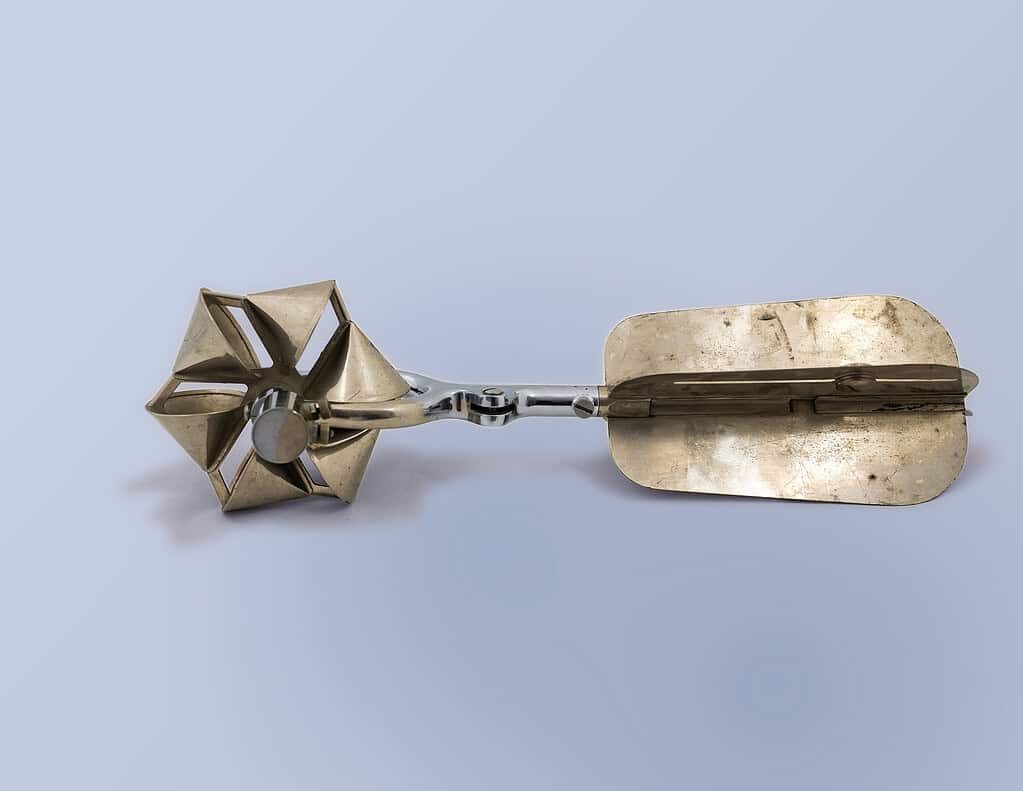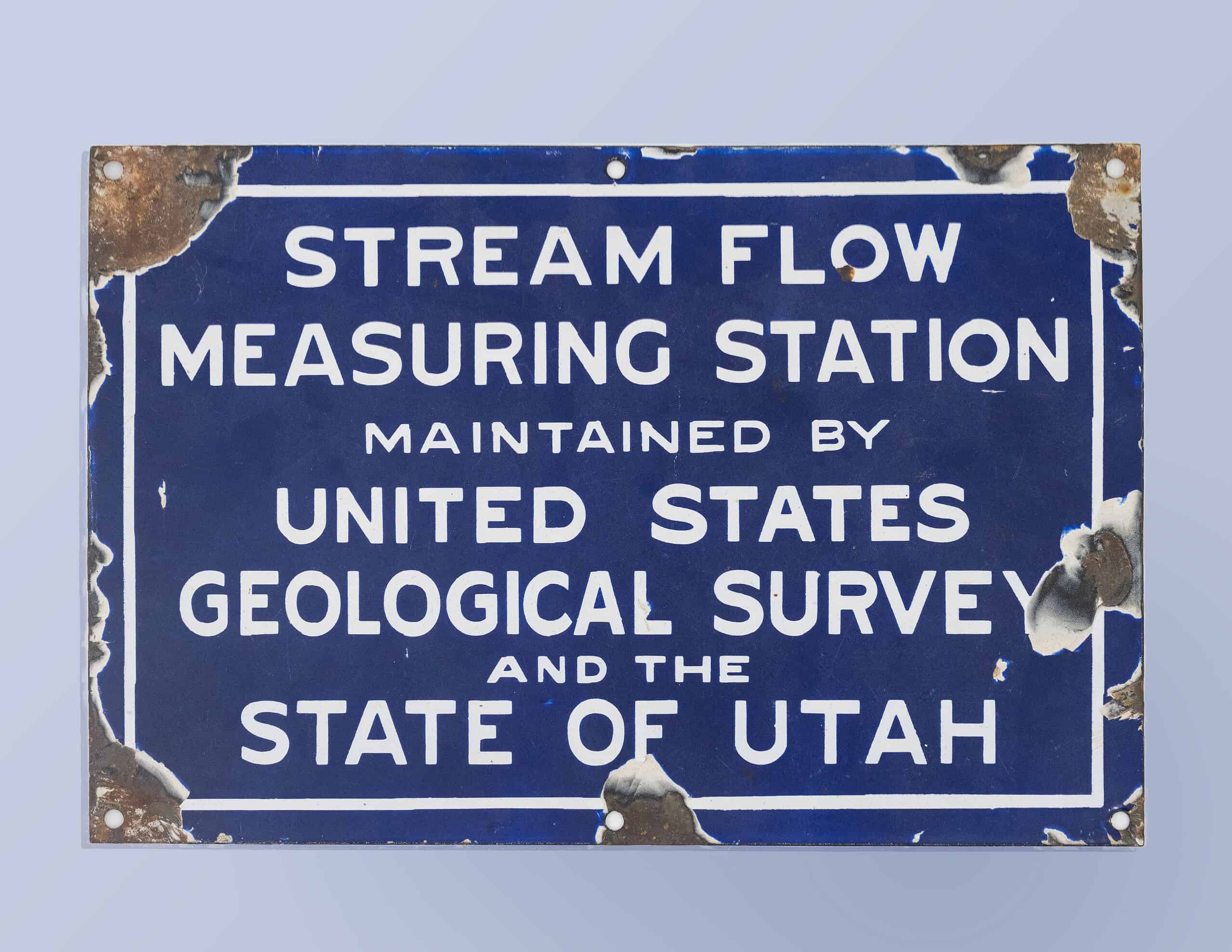Some information may be outdated.

Delving into the heart of our cherished collection, this week’s installment of the Moab History column invites you to unearth the stories behind the artifacts that encapsulate Moab’s diverse and captivating history. Step into the fascinating world of our heritage through the lens of these remarkable pieces, beginning with this United States Geological Survey Current Meter and measuring station sign.
This water meter was designed in 1896 by USGS engineers. The closest monitoring locations on the Colorado River were near Cisco and down Potash Road outside of Moab. It is unclear whether these stations utilized this specific Price AA water meter, as this USGS water meter was suited for smaller streams.
According to the USGS, the Price AA Current Meter has been used for decades to measure the discharge and flow of streams.
“The stream channel cross section is divided into numerous vertical subsections. In each subsection, the area is obtained by measuring the width and depth of the subsection, and the water velocity is determined using a current meter. The discharge in each subsection is computed by multiplying the subsection area by the measured velocity. The total discharge is then computed by summing the discharge of each subsection.

The velocity of the streamflow can be measured using a current meter. The Price AA current meter has a wheel of six metal cups that revolve around a vertical axis. An electronic signal is transmitted by the meter on each revolution allowing the revolutions to be counted and timed. Because the rate at which the cups revolve is directly related to the velocity of the water, the timed revolutions are used to determine the water velocity. The Price AA meter is designed to be attached to a wading rod for measuring in shallow waters or to be mounted just above a weight suspended from a cable and reel system for measuring in fast or deep water. In shallow water, the Pygmy Price current meter can be used. It is a two-fifths scale version of the Price AA meter and is designed to be attached to a wading rod. A third mechanical current meter, also a variation of the Price AA current meter, is used for measuring water velocity beneath ice. Its dimensions allow it to fit easily through a small hole in the ice, and it has a polymer rotor wheel that hinders the adherence of ice and slush.”
This water meter was donated by John Keys and now resides in the Moab Museum Collection. To learn more about streamflow and the data collected by meters, which is utilized for flood warning and prediction; design of bridges, dams, and levees; legal agreements and compacts; planning, regulation, and research, visit the USGS’s Water Science School.
The Moab Museum is dedicated to sharing stories of the natural and human history of the Moab area. To explore more of Moab’s stories and artifacts, find out about upcoming programs, and become a Member, visit www.moabmuseum.org.
Read the rest of this week’s edition:
Appreciate the coverage? Help keep local news alive.
Chip in to support the Moab Sun News.





